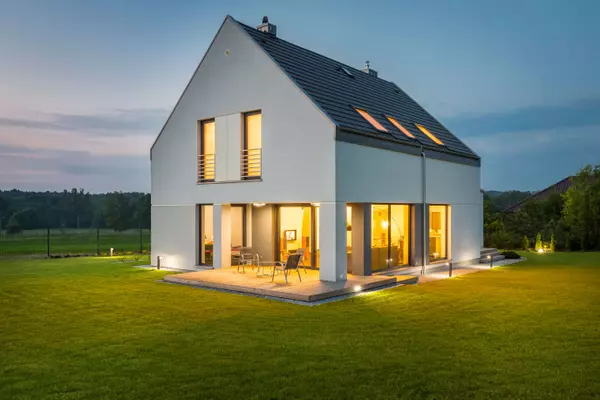Honey oak is making a comeback in our homes. Just don’t call it honey oak.
By Rachel Kurzius
The Washington Post
Oasis fever sweeping the globe. Spaghetti straps and slip skirts galore. With ’90s style in vogue, it’s no wonder that another once-derided trend from that era is experiencing a resurgence. Welcome back, honey oak.
The warm-toned wood is once again finding its way into kitchens and onto floors and furniture. But designers are calling it something new to counter their clients’ aversion to the phrase “honey oak” and its connotations with a dated, overly matchy-matchy aesthetic.
“When I’m describing it, I always just say it’s a ‘natural oak,’ ” says David Ries, principal at Ries Hayes Interiors in New York City. “We’re very aware of the hang-up, so yeah, we’re using other words to get people to move beyond it.”
However clients may feel about the descriptor, they gravitate toward the look. When they tell Ries they want a “spa-like” or natural feel in their homes and he presents them with options, they tend to select the honey oak materials.
“There’s a huge shift in going to things that feel very, very natural, very handmade,” he says. “I think a honey oak just ties so beautifully into that whole aesthetic, that whole kind of maker look, because it feels so grounded. It’s soothing, and I think that is what everybody’s wanting right now.”
Honey oak definitively fell out of favor by the Great Recession, which coincided with the Great Gray-ening of interiors. The boom in home flipping brought gray walls, gray floors, gray decor. Cool tones took over, leaving little room for a warmer palette.
Now the color wheel of time has turned again. People seek “that natural warm feel,” says Cathleen Gruver, lead interior designer at Gruver Cooley in Purcellville, Va. “You really want your space to feel inviting and comfortable.”

Plus, the millennial gray homes that people purchased more than a decade ago have aged, literally and aesthetically, says Julie Jones, owner of Julie Jones Designs. “There’s wear and tear now, let’s say on the flooring, on the cabinetry; they’ve got to replace these things anyway, and they don’t want what was in style 10 years ago,” she says.
Enter honey oak — er, natural oak. The new name isn’t just rebranding. This isn’t quite the honey oak that naysayers remember from the ’90s.
“It’s the same wood, but the finish is different, the shape, the texture, like we’re kind of playing with it in a more modern way,” says Sara Swabb, founder and creative director of Storie Collective in Washington, D.C.
Old-school honey oak kitchen cabinetry had ornate paneling and decorative trim. “Something like that gives it that kind of dated feel. And now we’re seeing the honey oak with more of a flat panel,” she says. “It’s pairing that traditional warmth of the honey oak with a modern spin on form and shape.”
While a satin finish gives older versions more of a sheen, “right now we’re using more of like a matte finish, which is just giving the nod to the wood and the texture without the shine, and that helps soften” it, adds Swabb.
Honey oak cabinets in the ’90s were often accompanied by honey oak floors and honey oak trim, too. Designers today are much more interested in mixing it up.
That’s because the tone is a “team player,” Ries says. “It’s very easy to build palettes on it. It’s very easy also to introduce color.” This is especially true of honey oak on floors: “It complements really anything” without absorbing too much light, he says.
“Balance it with deep hues, layering textures,” Swabb says. The surrounding materials could either be “a deep contrast,” such as a dark, rich color, or a “more gentle touch,” like white. “They don’t need to also bring the energy. That honey oak’s gonna do it for us, you know?”
Many of Jones’s clients are people who have honey oak-filled homes and either don’t have the budget or don’t want to deal with the inconvenience of changing it all. Her mantra: “All right, let’s embrace it,” she says. “Honey oak itself is a midtone color. So if I bring lights in and I bring darks in, it usually complements it.”
It can also liven up a dull spot. Gruver often hears from people living in builder-grade homes without any flourishes, seeking the best way to add character. In response, she asks them, “What flooring are you using? What cabinets are you thinking?” Those elements are the foundation of the home, she says, and oak “automatically gives the vibe of quality.” Plus, wood stains can handle everyday wear and tear better than painted materials.
Because that’s the thing about honey oak: For furniture or cabinetry to survive long enough to be scoffed at as dated, it has to have some measure of longevity.
“People over time probably have kept it because they said, ‘Well these are a quality cabinet.’ You know, they’re not gonna just rip out wood — because they were just actually solid wood,” says Jones, unlike the particleboard-filled cabinet world today. “It’s good wood, beautiful oak.”
Her prediction: Many of the folks who once painted their honey oak cabinets will change their tune — and their look. “People are gonna be stripping their honey oak cabinetry and saying, ‘There was beautiful wood underneath this thing.’ ”
Categories
Recent Posts










GET MORE INFORMATION


